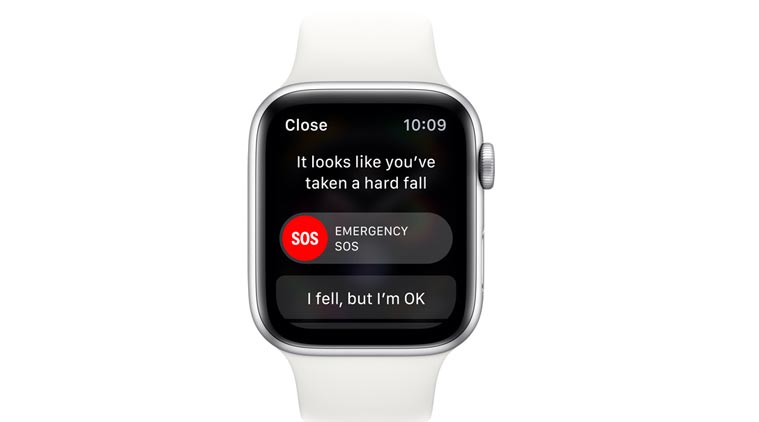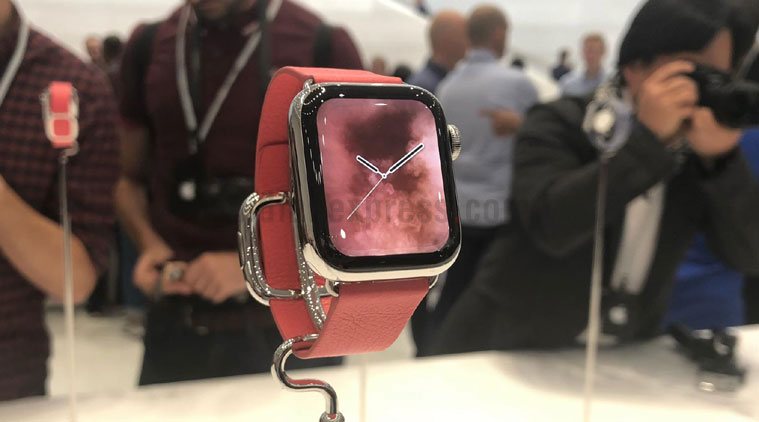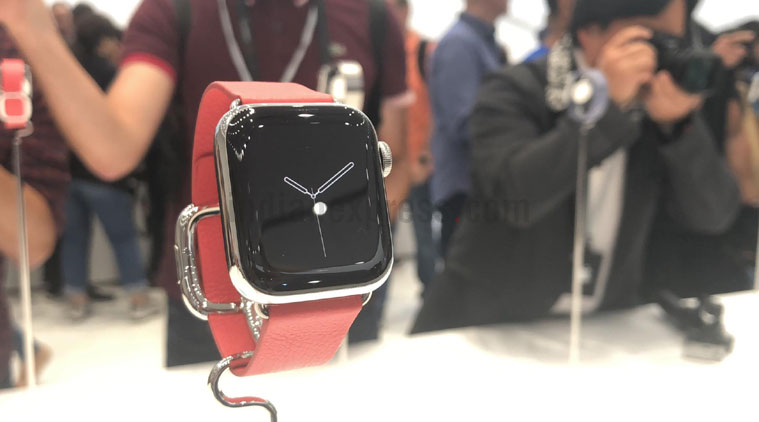
When the Apple Watch Series 4’s was launched last year, the ECG feature on the smartwatch captured most of the attention. But there was another feature inside the watch that capable of saving lives across the world, fall detection.
What is fall detection on Apple Watch Series 4?
The Apple Watch has the ability to detect a hard fall based on a bunch of algorithms and by analysing wrist trajectory and impact acceleration. If watch senses that the person has been immobile for 60 seconds after a hard fall was detected, it will automatically call emergency services and send a message along with location to emergency contacts in the language chosen by the user beforehand.
Watch our review of Apple Watch Series 4
How is fall detection possible on Apple Watch Series 4?
Accurate fall detection became possible with the Apple Watch Series 4, which is capable of measuring up to 32 g-forces, twice that of Series 3. The accelerometer and gyroscope too are up to eight times faster than previous generations of Apple Watches. All of these together help the watch collect the higher fidelity motion data needed for fall detection.
Read more: Apple event on March 25, streaming and news services likely to be announced
How did Apple create the Fall Detection algorithms?
There have been fall detection devices before, but none were on a watch and hence the kind of data needed was not available. Apple got this training data over a long-term study working with real people to ensure the data was “true”. In other words, no stuntmen or mannequins were involved in the collection of this data.

With 250,000 days of data from 2,500 participants, Apple’s team looked at the most common types of falls — slipping and tripping then bracing, falling off a ladder, tripping on an uneven curb — to hone in on/and recognise the angle/time of impact.
In the process, they also learn that types of falls for elderly are often different to falls and impact from say recreational activity or contact sports. This is significant because a large chunk of older patients fail to tell their caregivers about falls, making it difficult for doctors to understand the origin or underlying causes, such as balance, movement disorders, reduced leg strength, or worsened hand-eye coordination.
Read more: Apple Watch Series 4 review: The best smartwatch just got much better
Hence it was critical for falls to be documented so as to provide the patient, caretaker and physician with more insight. Fall detection is hence on by default for users who are above the age of 65.

What did Apple learn from studying falls?
From its study of the fall data, Apple learnt about specific motion patterns associated with different types of falls. So, when someone trip, they pitch forward and try to brace themselves with their hands. Someone slipping naturally swings their arms upwards in a windmill motion. The Apple Watch Series 4 can clearly recognise these fall patterns.
Are there false positives?
Some events, like a car crash can lead to the fall detection being triggered and there have been instances where the Watch has alerted emergency service even when it was not s fall per se.
The Watch filters out a lot of regular trips and falls and Apple has data on what these false positives usually are. But when a hard fall is detected, Apple Watch sends the user an alert and she has the option to either confirm she’s fine or to call for emergency services. If the user is immobile for a minute, the watch will start an emergency call automatically. The user can cancel this call if needed. This also helps to prevent overburdening of emergency services.
Does fall detection get better with more data?
Apple does not collect user data from Apple Watches, hence the algorithm is based on the original data set only. The new data stays locally on user’s watches and hence is not used to change the algorithm itself. However, some local customisations do gradually happen on the watch itself like for users who run a lot.
Where and how are falls recorded in the watch?
Falls detected by Apple Watch are recorded in the Health app under “Results.”